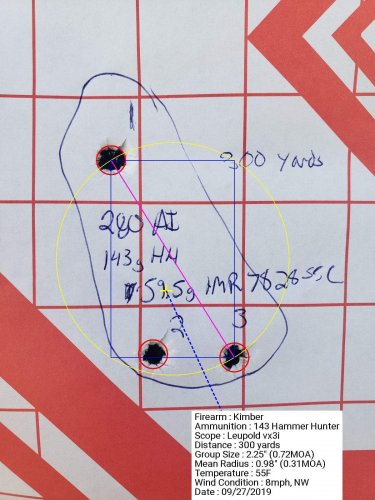ImBillT
Well-known member
- Joined
- Oct 29, 2018
- Messages
- 3,921
I wouldn’t recommend beating your head against a wall to make your gun shoot with a particular powder, but my experience has been that a particular powder is not what makes a gun shoot well or not. There are multiple velocity windows in which a rifle will shoot its best. If you simply shoot duplicate loads from a load manual it may take 5, 10, or 15 loads before you accidentally hit one of those ideal velocities, and that will often have spanned quite a few powders leading you to believe that powder X is what your gun likes. On the other hand you can usually pick a powder that’s in the load manual for your cartridge, start at or slightly below the low load, and work up to max in small increments(.2-.5gr) performing a ladder test or shooting three shot groups, and you’ll almost certainly find two or three powder charges that gun likes. You can then note the velocities that those loads produced, and almost any powder will shoot about as well as long as your load produces that same muzzle velocity. It’s definitely the case that some powders won’t get you to the high node, so if you’re not happy shooting on a lower velocity node, then you’d have to change powders. If you can test loads from low to max(in small increments, not just the two or three listed in the manual) and can’t get the gun to shoot, the problem is usually something else.(bad cleaning practices, loose screws, bad bedding, bad scope, bad barrel, bad dies, bad brass, bad chamber job, bad bullets etc.) It can get expensive and frustrating pretty quickly to keep switching powders if the first few don’t work out. I’m not saying that people don’t change powders and suddenly start shooting better, in just saying that it’s almost always the change in velocity that made the difference, not the change in powder.
Some powders are better than others. Some foul a lot less, some are more temperature stabile, some are more consistent from lot to lot etc.
Some powders are better than others. Some foul a lot less, some are more temperature stabile, some are more consistent from lot to lot etc.





